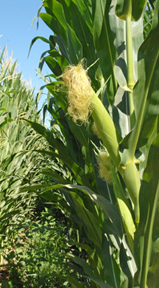 Rising corn prices mean higher feed bills for dairy producers, which is why a recent forecast about global oil demand points to the possibility of higher milk production costs in 2011. Connecting the dots between oil, corn prices, and dairy feed costs is a linkage that also includes China. Here's how:
Rising corn prices mean higher feed bills for dairy producers, which is why a recent forecast about global oil demand points to the possibility of higher milk production costs in 2011. Connecting the dots between oil, corn prices, and dairy feed costs is a linkage that also includes China. Here's how:Last week, international energy consulting firm Wood Mackenzie Limited said total worldwide oil demand during the third quarter of 2010 was 88.3 million barrels per day, an all-time record. Don't look for that record to last long, however. Developing countries have a voracious appetite for oil, accounting for 85 percent of increased global demand, and there's nothing on the horizon that suggests a slowdown. Heading that list is China.
The firm said China's thriving economy is absorbing new cars like a sponge, and is on pace to buy 18 million of them this year. That's a one-year increase of 32 percent; yet demand shows no sign of cooling. The U.S., by comparison, is projected to buy 11.5 million cars.
Cars need fuel, and increased demand for oil is an obvious result. Higher demand means higher oil prices . . . which pulls up the value of ethanol, as well. That, in turn, drives up the price of corn since ethanol distillers can afford to pay more for it than farmers who want to feed it to cattle, hogs, and poultry. The problem is, as corn goes up so do the prices of wheat, barley, and all other corn substitute feeds because they're worth more.








